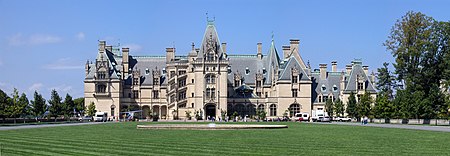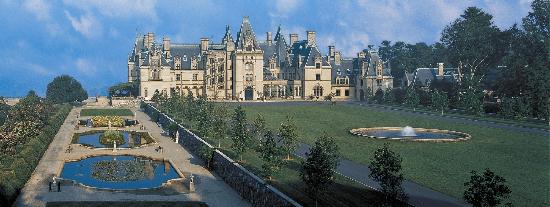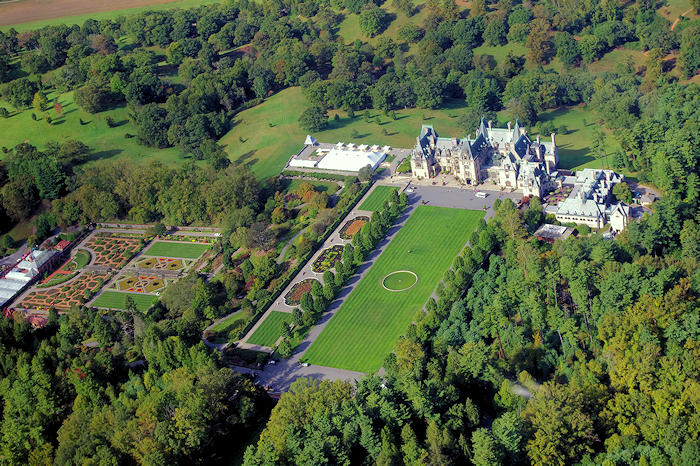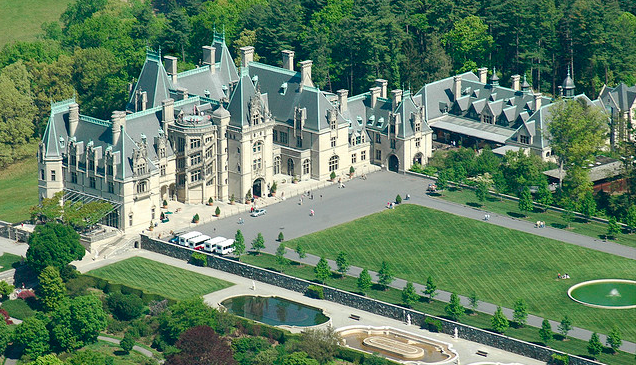Biltmore Estate
It was built by the New York architect Richard Morris Hunt commissioned by George Washington Vanderbilt II 1888-1895 and was the largest private estate in the U.S., with a total area of 175,000 square feet ( approximately 16,260 m²). It has a 238 meter long facade of Indiana limestone, comprises 250 rooms, a swimming pool, a bowling alley and a gym. When completed in 1895 it was fully equipped with electric connections and one of the first houses in which Thomas Edison's light bulb was using.
History
George Washington Vanderbilt, youngest son of William Henry Vanderbilt visited with his mother, Maria Louisa Kissam Vanderbilt (1821-1896) from the 1880s, regularly the climatic health resort of Asheville in North Carolina. While his older siblings had built their summer residences in the vicinity of New York City, ( in Newport, Rhode Iceland, and Hyde Park, New York). he decided to erect his summer residence here.
Richard Morris Hunt, who had previously worked for the Vanderbilts, designed for his client, a castle-like property, in which were several Loire castles Godfather ( so the grand staircase of the Château de Blois served as a model of the external spiral staircase). The property is still family owned, however, is to visit since 1930. It served as a filming location, inter alia, for the films Welcome Mr. Chance, The Swan, Richie Rich and Hannibal.
Architecture
It was Vanderbilt's desire to emulate the European country manor style. He commissioned the prominent New York architect Richard Morris Hunt, who had previously designed for different houses Vanderbilt family, a house in chateauesque style design. He stood castles of the Loire Valley model, including the Chateau de Blois, which were built in the style of the French Renaissance architecture. The property also included a separate village, the Biltmore Village, and a church that is known as the Cathedral of All Souls.
Interior
During construction, Vanderbilt went to travel abroad in order to acquire the facility. He returned with thousands of pieces of furniture for his newly built house to North Carolina. The interior design includes furniture, tapestries, hundreds of rugs, prints, linens and decorative objects, all from the period between 1400 and the late 1800s. The range is from a wide variety of Eastern and Western countries and continents around the world.










.jpg)